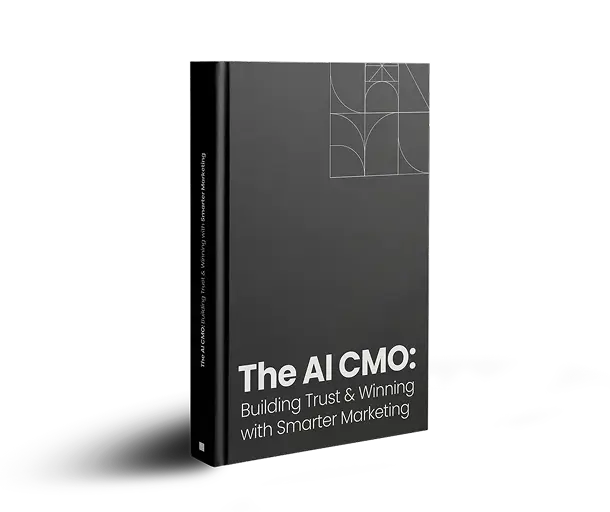
Highlights
- Why owned channels outperform ads in early ABM funnels
- Best account-based marketing (ABM) solutions for 2025
- Top owned channels for ABM strategy: LinkedIn, newsletters, blogs
- Best practices for implementing an ABM engine with first-party data
- Metrics to measure ABM funnel content strategy success
Running ads to your ICP can drain budgets quickly, and worse, buyers often tune them out. What many enterprises overlook is that your owned channels are the most cost-efficient ABM engine. Platforms like LinkedIn posts, executive newsletters, podcasts, and blogs already attract your target buyers.
By turning these assets into a structured account-based marketing (ABM) engine plays, you can create trust, build familiarity, and capture valuable first-party intent data that no ad platform can touch. This makes owned channels for ABM strategy the foundation of any modern program. Start with content your ICP already consumes, then layer paid and sales motions for maximum impact.
What is an ABM Engine and Why Do Enterprises Need One?
An account-based marketing (ABM) engine is a structured system for targeting and engaging high-value accounts with precision across marketing and sales touchpoints. Unlike traditional B2B targeting, which casts a wide net, an ABM engine focuses resources on a defined set of accounts that matter most to revenue.
Enterprises need one because:
- CAC is rising, especially in SaaS.
- Buyers distrust ads but trust experts drive the content.
- Precision ABM engines align marketing and sales around account signals.
In short, an ABM engine turns scattered marketing activities into a coordinated system for account engagement and pipeline creation.
Why Owned Channels Should Power Your ABM Engine First
Owned channels and ABM strategy are a competitive edge because they generate first-party data that no algorithm or ad platform can control.
- Cost efficiency: You already own the channel, so impressions are essentially free.
- Trust factor: Buyers engage with authentic thought leadership, not sales pitches.
- Signal quality: Clicks, opens, and comments reveal real buying intent.
Running ads to a cold audience is like paying rent. Building trust through owned media is like owning the property.
Pro Tip: Start every ABM program with owned-first campaigns. Use your first-party engagement data to determine when and where to allocate your paid ad spend
Which Owned Channels Drive the Most Impact in ABM Campaigns?
Not every channel delivers equal impact in a high-precision ABM engine. The ones that consistently punch above their weight are:
1. LinkedIn Thought Leadership
Senior executive posts and account-targeted content on LinkedIn build top-of-mind familiarity in your ICP’s feed. With LinkedIn seeing over 1.77 billion monthly visits in 2025, and a quarter of users interacting with brand content daily, it’s a prime channel for B2B influence.
2. Executive Newsletters
Delivering curated insights directly to decision makers’ inboxes builds one-on-one trust. In 2025, 97% of B2B marketers include LinkedIn in their content strategy, direct digital channels like newsletters remain integral.
3. Podcasts & Webinars
These formats allow deeper storytelling, education, and interactive experience. With 87% of B2B marketers planning to invest in video and podcast formats in 2025, and attention spans gravitating to audio/visual content, these formats are particularly effective in mid-to-late funnel engagement.
4. Blogs (Hub & Pillar Content)
Blogs remain the strategic hub for your ABM funnel content strategy, from awareness to demand and conversion. Content marketing helps 83% of B2B marketers reach brand awareness goals, and 77% use it to build trust.
Best practice: Repurpose every core idea across multiple channels. For example, after a webinar, distill the content into a blog post, LinkedIn carousel, newsletter snippets, and podcast clips. You’ll capture multiple engagement signals and reinforce messages across touchpoints.

Where Do Owned Channels Sit in the ABM Funnel?
Owned channels are the foundation of an account-based marketing engine. Each stage of the ABM funnel maps directly to specific owned media plays that nurture accounts with precision:
Top-Funnel (Awareness): LinkedIn thought leadership posts, blogs, and short-form podcast clips are ideal for putting your brand in front of the right accounts at a relatively low cost. At this stage, the goal is visibility and familiarity. When a CFO at a target SaaS account repeatedly sees your insights on LinkedIn, you’re laying the groundwork for trust.
Mid-Funnel (Education): Once accounts are aware, deeper content is needed to engage them. Webinars, newsletters, and gated eBooks allow you to provide valuable content, helping accounts connect your expertise to their business challenges. For example, a VP of Marketing downloading a gated playbook is a stronger buying signal than a casual blog reader.
Bottom-Funnel (Conversion): At this stage, the focus shifts to high-touch, personalized interactions like custom demos, roundtables, or account-specific events. Here, the owned channel serves as a bridge for sales, giving them the proper context to start conversations with warmed, high-intent accounts.
When Should Enterprises Add Paid and Sales Motions?
The single biggest mistake ABM teams make is activating paid and sales outreach too early. Hitting accounts with ads before they’ve shown intent can feel intrusive and waste budget.
Instead, enterprises should wait for clearly owned channel engagement signals, such as:
- Multiple impressions from the same account on your LinkedIn content
- Consistent clicks on newsletters, blogs, or podcast links
- Open and forward activity from key buying committee members
Only after these signals appear should paid and sales motions be introduced. At that point, ads and outreach serve as amplifiers of existing trust, rather than replacements for it. This sequencing ensures that accounts feel nurtured rather than chased, and sales conversations begin on warmer ground.
How to Implement a Precision ABM Engine Using Owned Channels
Building an ABM engine for SaaS businesses or enterprises requires systemization:
- Map ICPs to owned content streams. Align LinkedIn, newsletters, and blogs to account for pain points.
- Personalize at the segment or account level. Start broadly (by industry/vertical), then narrow down.
- Integrate first-party data into ABM platforms. Tools like 6sense, Demandbase, or HubSpot help manage ABM-owned media signals.
- Orchestrate plays with sales. Marketing warms, sales activate.
- Test cadence. Weekly newsletters, daily LinkedIn, and monthly webinars keep signals active.
Best practices for implementing an ABM engine: focus on consistency, measurement, and closed-loop feedback with sales.
Key Metrics for Measuring Owned Channels in ABM
To measure the success of your owned channel ABM engine, go beyond vanity metrics:
- Engagement depth: dwell time on posts, time on blogs
- First-party impressions & click-throughs: unique signals by account
- Newsletter metrics: open rate, forward rate, ICP segmentation
- Pipeline influence: how many SQLs touched owned content
- Content-to-revenue attribution: accounts exposed to X touchpoints before closing
Pro Tip: Always measure at the account level, not the individual level. The true buyer is the buying committee.
FAQs
1. What are the Best Account-Based Marketing (ABM) Solutions for 2025?
Top platforms include 6sense, Demandbase, HubSpot ABM Hub, and Terminus, each of which integrates with owned media signals.
2. How do I Choose Account-Based Marketing Channels?
Start with owned channels like LinkedIn, blogs, and newsletters, then layer in paid when intent signals show readiness.
3. What’s the Difference Between ABM Targeting and Traditional B2B Targeting?
Traditional B2B focuses on leads; ABM targeting focuses on accounts, engaging multiple stakeholders with personalized content.
4. How Do You Measure the ROI of ABM-Owned Channels?
Track account engagement, pipeline creation, and revenue influenced by owned content.
Conclusion
Your owned channels are the hidden powerhouse of a precision account-based marketing (ABM) engine. They build trust, generate first-party data, and prepare accounts for sales and paid activation, without the heavy cost of ads.
The shift is clear: treat owned media as the foundation, not an afterthought. Paid and sales motions should amplify the signals you already see, not replace them.
Ready to transform your channels into an ABM engine? Explore Unboundb2b’s ABM solutions for 2025 and start building account trust today.
Our blog
Latest blog posts
Tool and strategies modern teams need to help their companies grow.

In this article, we’ll explore how AI-driven content, AI lead scoring, and AI-drive...

Marketers often confuse drips vs nurtures, but each plays a distinct role in B2B emai...

This article explores the key differences between enterprise sales vs SMB sales, high...







